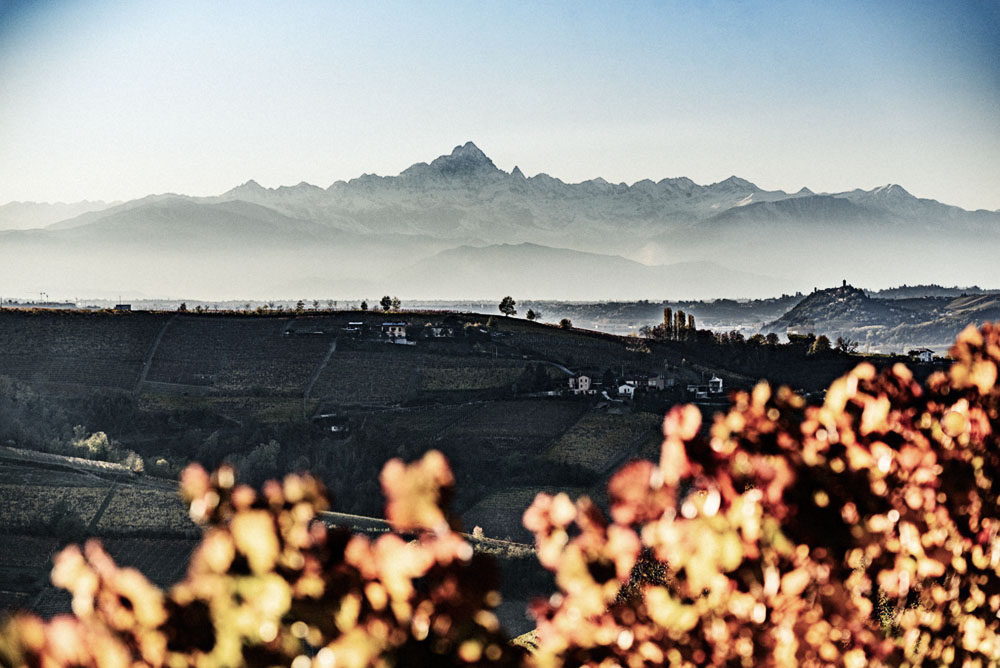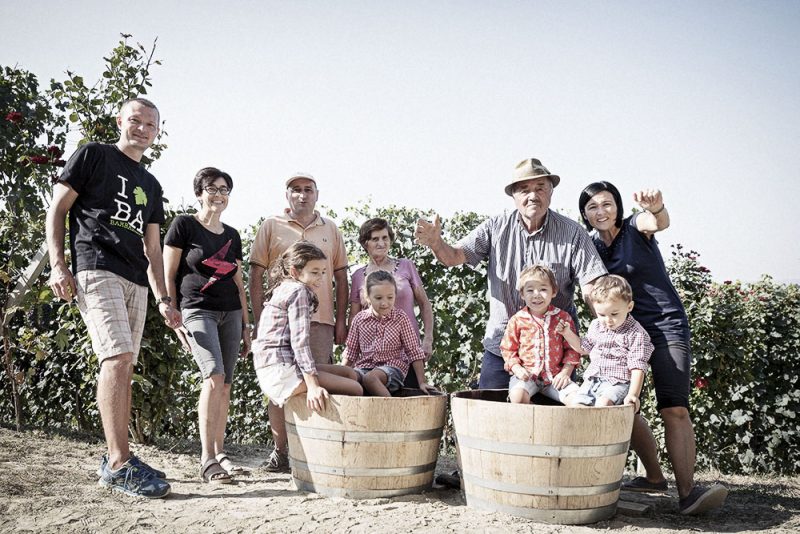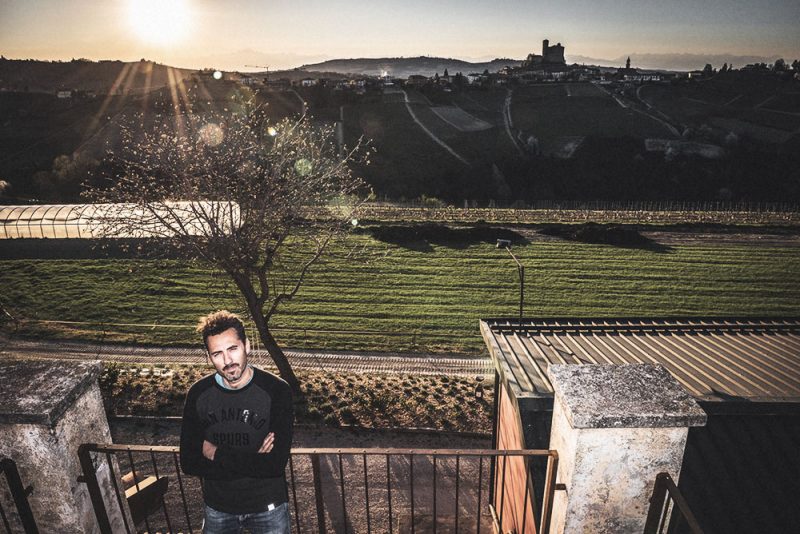
Nebbiolo is the key to Barbaresco’s identity
By Gurvinder Bhatia
This article was originally published in April 2020
Barbaresco may be historically, geographically and culturally linked to that other wine from the Langhe made exclusively from Nebbiolo grapes, but certainly the time has passed for references to Barbaresco as that other wine’s “little brother” or the “feminine” expression of Nebbiolo. (In fact, all references to any wine as masculine or feminine should cease as they are outdated descriptors perpetuating myopic views.)
According to Enrico Dellapiana of Cantina Rizzi, the desire to showcase Barbaresco on its own was the impetus for Espressione Barbaresco, an event created by the Enoteca Regionale del Barbaresco and held for the first time in 2019 at the historic Castello di Neive in the town of Neive, one of the four municipalities where Barbaresco can be produced.
Dellapiana describes wanting to showcase Barbaresco by itself because “it is one of the most important wines of the region — it is its own wine and has its own identity and its own reality.” In many ways, Barbaresco is a technical wine as it is subject to strict geographical, viticultural and vinification rules as a result of its designation of origin (i.e., DOCG) status. In addition to Neive, the municipalities of Barbaresco, Treiso and Alba (specifically San Rocco Seno d’Elvio) comprise the geographical territories in the Langhe hills of Italy’s Piedmont region where the wine may be produced.
And, of course, only Nebbiolo grapes can be used and there are strict guidelines with respect to yields, minimum alcohol levels (12.5 percent) and aging (26 months, including at least nine months in wood; 50 months for Riserva), among other regulations.
But Barbaresco is also a wine that evokes emotion and, in addition to the technical quality, the people, culture and history contribute significantly to what makes the wine unique and increasingly sought after around the globe.
The inaugural Espressione Barbaresco comprised 68 producers. Young, old, new and historic, all seemed to share a common purpose: to raise the awareness and profile beyond the wine’s natural association with that other “B” wine from the Langhe.
According to Gabriele Occhetti of Giuseppe Cortese, and an Enoteca Regionale del Barbaresco board member, it is “important to put attention on all the different interpretations of Barbaresco, which is large in terms of diversity, but not in terms of volume.”
Occhetti believes that “people should look at the Langhe like they look at Burgundy — then, within that, there is the grape, Nebbiolo. In Burgundy, people forget that they are talking about Pinot Noir, and instead speak of the many different crus.”
Francesco Versio of Figli Luigi Oddero and his own small winery, Versio Francesco, reiterates that what makes Barbaresco unique is the soil and microclimate in an area that is very small and, as a result, very exclusive. Versio emphasizes that producers need to “make wines that are very pure in order to recognize Nebbiolo from the area, but Nebbiolo that expresses the various vineyard sites and the characteristics of the vintage. It is important for people who taste the wines to understand the difference between soil and soil, and area and area. I believe that most wineries work this way to express the purity of Nebbiolo based on the site and the vintage.” Occhetti adds that the “overall quality of the wines is high” and it is “difficult to find a Barbaresco that is poorly made.”
Rita Barbero of Enrico Rivetto Wines believes that it is important to have an event where the focus for the international and domestic press is just Barbaresco. And perhaps the greatest benefit of the event was the collaboration of so many producers of Barbaresco.
Versio wants “a good collaboration between old producers and young producers and small family producers. Having the historical producers involved helps to communicate the history of Barbaresco, which is very important, and having the younger producers involved is also important because they have new ideas, are fresh and want to produce better wines every year.”
Dellapiana didn’t expect so many wineries to participate, but he was very pleased with the “cooperation between the small, the new, the old, the historical and the big all together to work with the same idea. The message is one of cooperation and collaboration of a small area.”
When asked to compare his father’s generation to the current generation, Dellapiana explains that the new generation is more open. All of his friends are in the wine business and they “ski together and go for dinner together.” He adds that there is an attitude and philosophical shift from previous generation. “Young producers today taste each other’s wines and cooperate with each other and ask questions and help each other.” In the past, he says, “you wouldn’t taste the wines of your neighbours.”
Both Simone Allario Piazzo of the Piazzo winery and Occhetti of Giuseppe Cortese agree that the event also gives the “smallest family wineries in the area the opportunity to be exposed to the international press attending and [that] they may not otherwise have these opportunities.” Occhetti adds that Espressione Barbaresco is “an opportunity to give a unique image of a group that can be successful for the region” and that it is “an important image for the denomination to see all levels of producers working together.”
The timing of Espressione Barbaresco could not have been better as it showcased the 2016 vintage, which, in the words of Versio, “is one of the most interesting vintages of the past 10 years.” And, according to Dellapiana, “2016 is such a good vintage and there is already attention coming to the area because of that.”
Barbaresco is already viewed as a high-quality wine and is known, respected and exported around the world. But all the producers believe that there is still much to be accomplished.
Says Occhetti, “one of the goals is to export the format of Espressione Barbaresco outside of Italy, but it is important for the first one to be in the region, where the wine was born.” He also adds that sales of Barbaresco are predominantly outside of the country and that, in parts of Italy, there is a lack of knowledge and understanding of what Barbaresco really is. “In order for people in Italy to understand, sometimes it is better to focus on building the understanding outside of Italy and people in Italy will often learn from that.”
Occhetti also sees the potential “to collaborate with other sectors in Italy — for example, fashion and automobiles — or other regions of the world, like Burgundy.” Ultimately, the goal is “to put the importance on Barbaresco, as anyone in the world who drinks wine or is around wine must know it.”
Dellapiana agrees that the event needs to first be established in the wine’s home and “producers have to be very proud of the region and the wines. And new events, such as Espressione Barbaresco, help to continue to build the identity of Barbaresco, the wines, the people and the region.”
But Dellapiana sees both old and young people around the world showing an interest in Barbaresco and says it is “important to market around the world — people want to meet the producers — and it is important to organize events like this globally with a collection of producers.” Even if he is not able to participate in all global events — because sometimes, he laughs, he has to “stay at home to make wine” — he feels that “if a good producer of Barbaresco sells wine in a market, that is also good for me because they have opened the door to potentially more good Barbaresco.”
Emphasizing the cultural and emotional aspects, Piazzo can’t overstate the importance of “trying to bring the world here — not just to know the wine, but to get to know the people behind the wines, the terroir, the soil, the culture, the whole region and allow more and more people to understand Barbaresco.”
He adds that it takes “hard work to make great wine — and that is the same for a brand-new, small producer and a 100-year-old established historical producer.” Piazzo also believes that Barbaresco doesn’t need to be compared to any other wine or region in the winemaking world.
He emphasizes that, despite the exigent nature of the market, producers should “focus more on not what they like or think the market likes, but on what the particular site has the ability to give — express the cru and the vintage.”
Piazzo adds that while it is still the older generation that mostly buys Barbaresco — since they have more disposable income — more young people are interested, and many young people travel to attend events like Espressione Barbaresco.
He states that it is “important to look not just at today, but to tomorrow. Young people are drinking better and want to know more about [wine]. And [they] like to try wines from around the world and like to taste different interpretations of the same grape variety. The idea is of the region and of Italy and of collaboration and to share the future. Alone, we are too weak; we need friends.”
Nice people with great attitudes making great wines — it shouldn’t be difficult for them to find a few friends.
More like this...
- There’s Something About EtnaThis article originally appeared in the Spring/Summer 2023 issue of Quench Magazine. I clearly remember first tasting Marco de Grazia’s...
- Carne en su JugoReprinted with permission from Mi Cocina: Recipes and Rapture from My Kitchen in Mexico by Rick Martinez, copyright © 2022....
- Aguachile & Tostadas de MaízReprinted with permission from Mi Cocina: Recipes and Rapture from My Kitchen in Mexico by Rick Martinez, copyright © 2022....
- An Unexpected Eating Guide to North GoaThis article originally appeared in the Fall-Winter 2022/2023 print issue of Quench Magazine. There’s no place like Goa. Colonized by...
- Germany NowMy last visit to Germany was seven years ago. For the record, I was booked to go in 2020 –...


